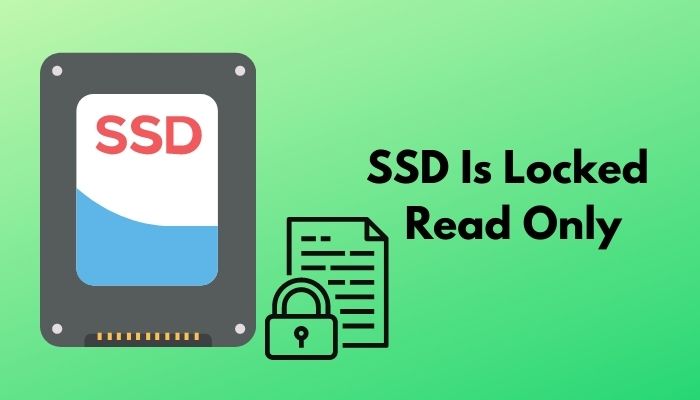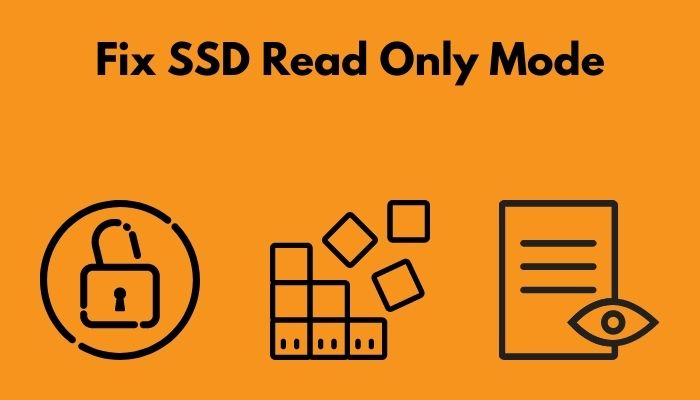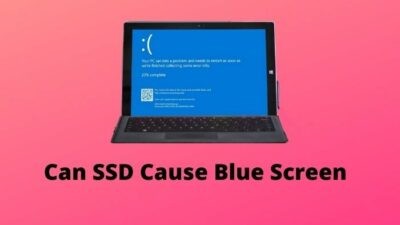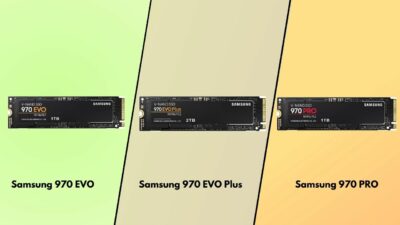Nowadays, most of us use an SSD for it’s high read and write speed. But you may have faced an issue where you can’t use your SSD as you want. More clearly, it goes in read only mode. The question arises,
What is read only mode?
It is super common to be eager to fix this problem. As a full-time video editor, I have faced the same fate and luckily can help you come out of this nightmare. I will show you every possible way to fix this issue in this article, so stay tuned.
Why is SSD Write Protected?
Write protected is a feature that enables users to protect their important data from being deleted, formatted, or moved. Some people use it for their hard disk, SSD, or USB drives to not get modified.
Nevertheless, write protection may give some users a hard time as they cannot copy new files in the drive or delete any data.
You will know your SSD is write-protected by facing these issues:
- You cannot open your SSD and Windows shows, “The disk is write-protected. Remove the write-protection or use another disk.”
- Your SSD is stuck in read-only mode in Disk Management.
You can manually make it write-protected, but sometimes it may be caused by various other reasons. Here I’m enlisting some reasons:
- Because of virus or malware, your SSD may get into Read Only mode.
- You may have added the write protection yourself.
- Bad sectors sometimes cause the SSD to go into Read only mode.
- Sometimes third-party softwares add write protection on your SSD.
Don’t worry; no matter what caused the problem, I will be guiding you to all the solutions.
Follow our guide to know can SSD Overheat.
How to Fix SSD Read Only Mode
In most cases, SSDs tend to be in read only mode when their lifetime write exceeds it’s limit or sometimes new SSDs tend to be read only as they are formatted as NTFS as a large number of people are PC users rather than Mac users, which causes Read Only mode.
Here I will be sharing some different ways to fix your SSD from read only mode. Here are the ways:
Method 1. Manually Unlock Write-Protected SSD with Password
If you have set the write protection on your own by setting up a password then you can simply remove it all by yourself.
If your SSD is locked through third party software then simply open up the software to unlock it with your password.
- Launch the write protection software.
- Select to remove the write protection from the SSD.
- If necessary put your password.
Method 2. Modify Registry Key
Editing the registry key is a good way to remove the read only mode. Here I will be explaining the process step by step:
- Press Windows key and search for Registry Editor and open it.
- Nevigate to Computer\HKEY_LOCAL_MACHINE\SYSTEM\CurrentControlSet\Control\StorageDevicePolicies
Note: If you dont find StorageDevicePolicies then you have to create one. Right-click Control folder and select New > Key and then name the key with StorageDevicePolicies. Now right-click in black spaces and click New > DWORD (32-bit) value and name it as WriteProtect.
- Double-click the WriteProtect key to open its properties.
- Modify the value from 1 to 0
- Click on OK to save the changes.
Now restarting your computer should ix up the issue. If not then you may proceed to the next method.
Check out our separate post: is SSD good for gaming.
Method 3. Remove SSD Read Only Issue Via Diskpart
Diskpart is a disk partitioning feature by which we can perform disk partitioning, partition formatting, partition creation, and so on. In this case, you should be careful as messing up here may cause permanent damage to the drive.
Without further ado, let’s move to the steps:
- Press the Windows key and search for Command Prompt.
- In Command Prompt, type diskpart and press enter.
- Type “list disk” and press Enter to get specific information about every disk on your Windows computer.
- Type “select disk #” and press enter. Here # is the number of the SSD drive.
- Type “attributes disk clear readonly” and press Enter: to remove the write protection on the SSD drive.
Then, the readonly attributes will be cleared successfully. After that, you can input “clean“>”create partition primary“>”format fs=ntfs” to format the read only SSD to a compatible file system, then you will be able to access data inside it.
This should fix the read only issue on your SSD.
Method 4. Run CHDSK to fix read only SSD
Having bad sectors on the drive may also cause to show “SSD is read only”. In this case, you can use CHDSK, a built-in utility that Windows PC provides, and it automatically searches for any kind of irregularities in the disk and fixes the problem.
To use CHDSK, follow these steps:
- Press the Windows key and search for Command prompt.
- In Command Prompt type “chkdsk #: /f” where # will be your SSD drive letter.
In some cases, you may encounter an error message saying, “Windows cannot run disk checking on this volume because it is write protected”. In this case, try another command “chkdsk g: /f /r /x” for removing write protection on the SSD.
Quickly check out my new post on What are the fastest PCIE 4.0 SSDs.
Method 5. Remove read-only attribute by formatting
After checking all the methods, you can try formatting the drive if you are still facing Read only issue. And you may have tried to format it from Disk Management or File Explorer but failed. As in Disk Management, the Format option is greyed out, so you cannot use that to format and in the File Explorer, an error shows “The Disk is write protected”.
So you can still format your disk by simply using a tool called AOMEI Partition Assistant Standard. You don’t need to worry as it a free-to-use software and can run in Windows 11/10/8/8.1/7 and even in Vista or XP.
Note: Formatting will erase every data or file you have on the drive. So remember to back up important data first.
For formating the drive using the tool follow these steps:
- Download AOMEI Partition Assistant Standard on your PC and install it.
- Open up the software and find the SSD that you need to fix. Right-click on the drive and select the “Format Partition”.
- In the pop-up window, you can choose a compatible file system. For Windows, select NTFS and hit OK.
- In the main interface, hit Apply and then Proceed to start the operation.
Hopefully, this should resolve the read only SSD issue. Now you can check if your SSD read only issue disappears or if the message “current read-only state: Yes” is changed to “current read-only state: No”.
Also, check our exclusive tutorial: is SSD compatible with all motherboards.
Summary
By checking all the methods given above, you should be good to go. Let me know if the article helped you in any way. If you have further queries, then feel free to ask me. I’ll be more than happy to help!





Could you advise what to do when SSD runs for few weeks then one day requests suddenly a secure password at boot up, which you have never set.
Failing to provide the “right” PWD means the SSD is not initialized by windows, hence will not appear in window for MBR repair, diskpart, gpart, disk management or even firmware update tool to work on it?
When faced with an SSD requesting a secure password at boot without having set one, it’s crucial to check if the SSD is part of a BitLocker encryption setup or if the motherboard’s firmware has a password requirement. Try accessing the motherboard’s BIOS/UEFI settings to check for any security-related configurations
i ve done all the 5 steps, in disk part it showing error on command to clean, in Aomei theres no option to format, my SSd id is 256 silicon power & just a day old. i had done an os migration thru Aomei & in bios changed the boot to ssd nvme but it got stuck on the logo , i made a restart with the earlier HDD , after which in disk managent it showed read only. no option comes when left click on disk in disk management exccept for properties . my system OS is windows 11.
would be greatful if you ve a solution for it.
thanks
regards
Nelson
Hello nelson,
Ensure that your system BIOS recognizes the SSD correctly and supports NVMe. Additionally, check for any specific firmware updates for your Silicon Power SSD that might address compatibility issues with Windows 11.